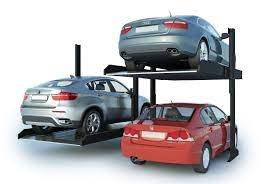Urban areas in India are facing a growing parking crisis. With the number of vehicles increasing daily and land availability shrinking, traditional parking spaces are no longer enough. The Puzzle Parking System has emerged as an innovative, space-saving, and cost-effective solution. Designed to stack cars in a multi-level arrangement, this system optimizes land usage without requiring large construction spaces, making it a preferred choice for both residential and commercial projects.
What is a Puzzle Parking System?
A Puzzle Parking System is a semi-automatic parking solution where vehicles are arranged in a grid-like pattern, both horizontally and vertically. The platforms move up, down, and sideways, allowing cars to be retrieved without moving others. Unlike fully automated parking, puzzle systems require minimal operational complexity while still providing excellent space utilization. They can be built above ground, underground, or as a combination of both, depending on the site requirements.
Why Indian Cities Need Puzzle Parking Systems
In cities like Mumbai, Delhi, and Bengaluru, finding parking is a daily struggle. The demand for smart parking solutions is high due to limited land availability and rising real estate costs. A Puzzle Parking System in Mumbai or other metropolitan areas helps maximize the use of available land, reduces congestion, and improves accessibility. This technology supports urban infrastructure by providing a sustainable approach to vehicle storage.
How a Puzzle Parking System Works
The mechanism is based on a series of platforms that can move both vertically and horizontally. When a driver parks their vehicle, the system automatically shifts other platforms to create space for retrieval without manual rearrangement. The movement is controlled by advanced sensors and a user-friendly operating system. This makes the process quick, safe, and efficient, allowing multiple cars to be parked in the footprint of just a few conventional spaces.
Benefits of Puzzle Parking Systems
One of the main benefits is space optimization. In urban construction projects, where every square foot is valuable, this system enables developers to provide more parking capacity without additional land acquisition. It also reduces waiting time, as cars can be accessed within minutes. From a safety perspective, vehicles are stored in a secure, enclosed structure, protecting them from theft, vandalism, and weather damage.
Types of Puzzle Parking Systems
There are several configurations available depending on the number of levels and design requirements.
- Two-Level Puzzle Parking – Suitable for small residential complexes.
- Three-Level Puzzle Parking – Ideal for commercial buildings and high-density areas.
- Customized Layouts – Designed for irregular land plots or existing structures.
These variations make the system versatile and adaptable for different urban scenarios.
Installation and Space Requirements
The installation process for a Puzzle Parking System depends on the site conditions. It can be integrated into new building designs or retrofitted into existing properties. The structure requires a flat surface, power supply, and minimal civil work compared to traditional parking basements. Many developers prefer it because it increases the value of the property and meets government parking regulations more efficiently.
Maintenance and Durability
A Puzzle Parking System is built with robust steel structures and reliable mechanical parts. Regular maintenance includes checking hydraulic systems, lubrication of moving parts, and software updates for operational safety. Since the system is semi-automatic, the risk of complete shutdown is lower compared to fully automated parking. With proper care, these systems can last for decades, providing consistent performance.
Safety Features of Puzzle Parking Systems
Modern puzzle parking solutions come with advanced safety mechanisms. These include overload protection, emergency stop buttons, motion sensors, and anti-fall devices. The operating panels are user-friendly, ensuring that both drivers and operators can handle the system with ease. Fire safety measures and ventilation systems are also included in enclosed structures to ensure a safe environment for vehicles.
Environmental Advantages
Aside from solving space issues, a Puzzle Parking System also supports environmental goals. By reducing the need for large parking areas, it helps preserve green spaces. It also minimizes vehicle idling time, which reduces fuel consumption and lowers carbon emissions. For eco-conscious developers, this is a step toward building sustainable urban infrastructure.
Popular Use Cases in India
This system is increasingly seen in commercial complexes, hospitals, shopping malls, and residential societies. In metropolitan regions like Mumbai, where parking space is a premium commodity, developers have incorporated multi-level puzzle parking systems into their projects to attract buyers and tenants. Even government projects and public parking facilities are adopting this model for better urban traffic management.
Future of Puzzle Parking in India
The future looks promising as cities continue to expand vertically. Smart parking systems like this will become an integral part of urban planning. With advancements in automation, sensors, and AI integration, future Puzzle Parking Systems will be even faster, safer, and more efficient. Government policies supporting smart infrastructure will further encourage adoption.
The Puzzle Parking System is more than just a parking solution it’s a step toward smarter, cleaner, and more efficient cities. By addressing urban parking shortages without occupying additional land, it aligns perfectly with modern infrastructure needs. Whether for commercial use or residential projects, this system delivers long-term benefits in terms of space utilization, safety, and sustainability. As Indian cities grow, adopting such innovative solutions will be essential for a better urban future.







